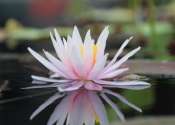Escalating arms race: Predatory sea urchins drive evolution
(Phys.org) -- Nature teems with examples of evolutionary arms races between predators and prey, with the predator species gradually evolving a new mode of attack for each defensive adaptation that arises in the prey species.








